Six plates in famille rose, Chien Lung
22 cm
€ 1.800,00
Prijs incl. 6% BTW & Verzendingskosten
Out of stock
Meer informatie
In the 17th century, the Dutch dominated the hegemony of export porcelain. The V.O.C. was responsible. : the East India Company. The commercial transactions on the spot went through the “Hong” and the mandarin or government official. The porcelain for Europe, usually blue and white (cracking and transition porcelain), was made in Jingdezhen private kilns, but sold and loaded onto ships at Canton, a major seaport. From 1740, the blue and white porcelain was still produced in Jingdezhen, but muffle furnaces were also established in Canton where polychrome decors were painted. on bare porcelain supplied from Jingdezhen. It was usually decorated with Chinese decors that were fashionable at the time, sometimes with some European touches. The 18th export porcelain for Europe is generally not marked. In 1650 in Leiden in Holland Andreas Cassius, physician and chemist, discovered a new red color based on gold chloride. The color is carmine to ruby red. The red color was combined in Europe with a white enamel based on tin oxide, resulting in an opaque color. Shortly after 1719 porcelain was also painted with these opaque colours, in contrast to the earlier translucent famille verte colours. The pink enamel is made in China by mixing the European pink color with finely crushed red glass, and then mixed with a colorless enamel to get a pink hue. Plates are mainly decorated with flowers (especially the peony), plants, fruits, trees, animals and “the rock”. In the second half of the 18th century, both sober and busy decors can be found. On display are six almost identical round plates in Chinese porcelain. They are hand painted with a famille rose decor where the rose varies from pink to carmine red. In the center we see a peony bush with an overglaze painted blue painted rock, with green leaves in varying shades on which four peony flowers in pink color. There is a large grasshopper on the rock, as well as a bird at the bottom of the rock. There is also a fence structure. Starting with the transition, we see six ruji elements in pink and manganese on the border, each with a branch with flowers in between. The rim is surrounded by a continuous frieze of flowers and curls in green and manganese honeycomb pattern. The lip is painted brown. The back is glazed light blueish except for the base ring. On the border there are three flowered branches brushed in manganese. The signs are not marked. They were produced during the Chien Lung Imperial period, ca. 1770.
Condition: one plate has a chip on the outside of the rim, otherwise the other five are in perfect condition.
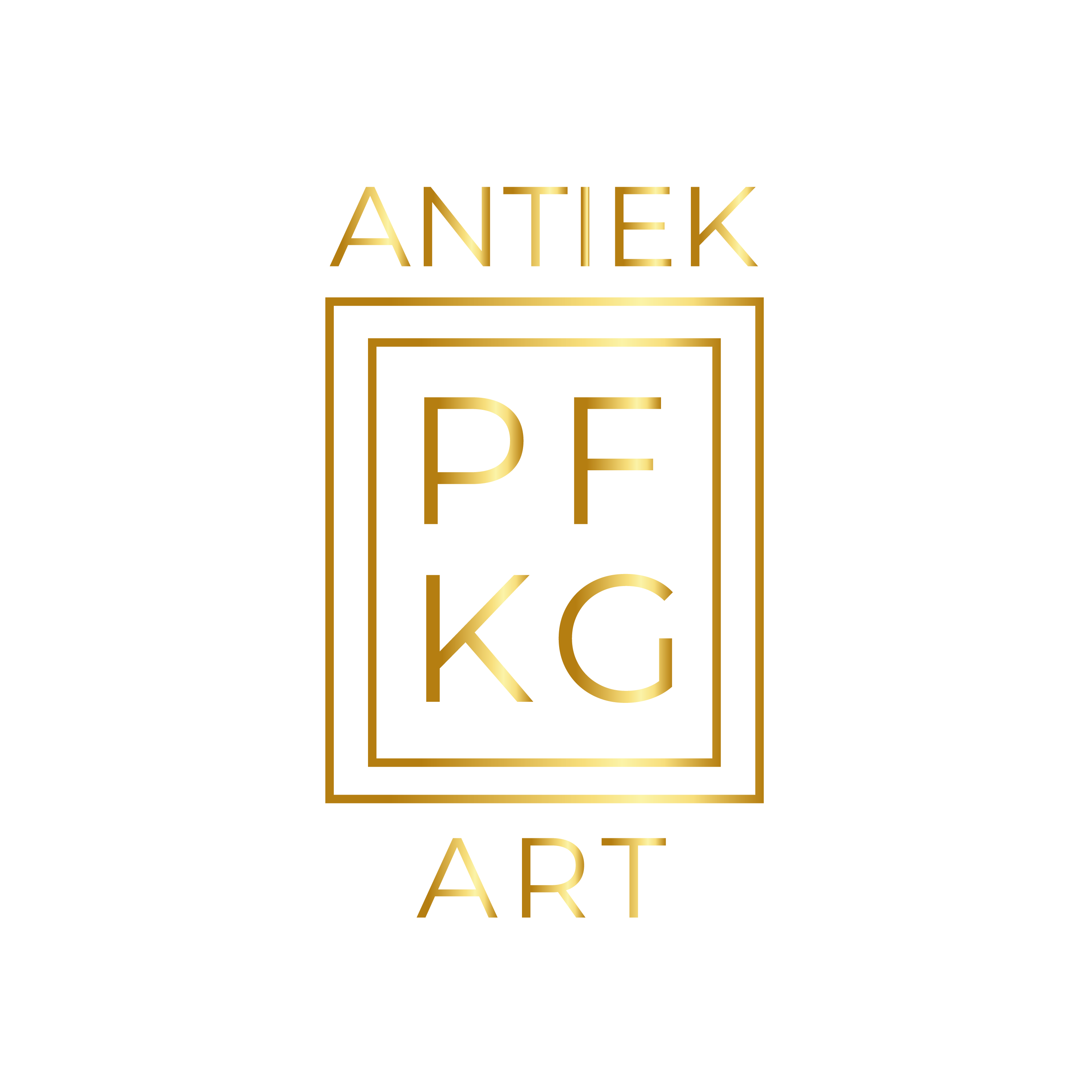

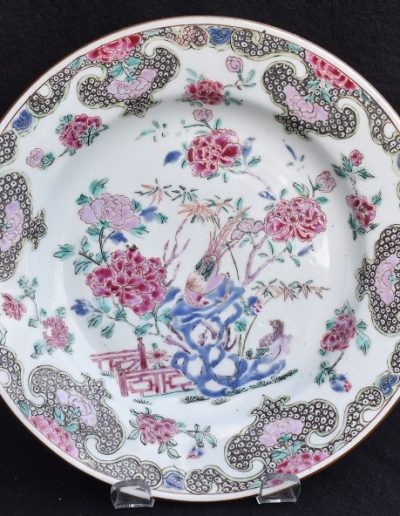


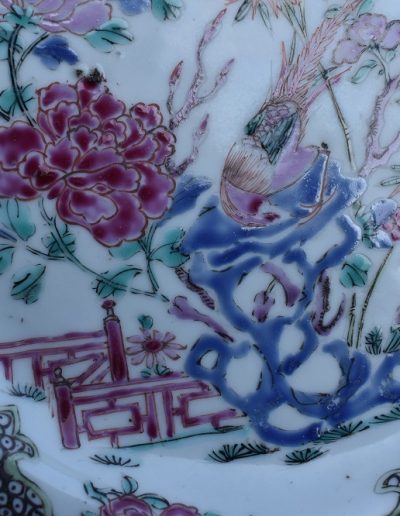
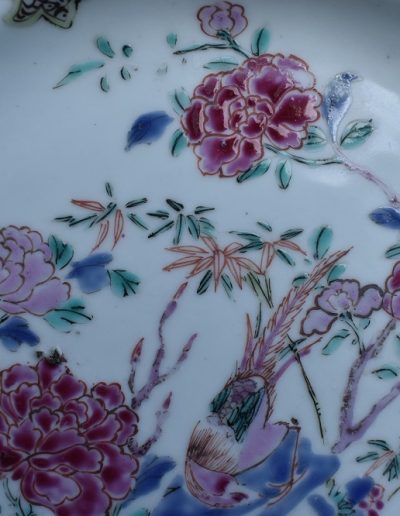
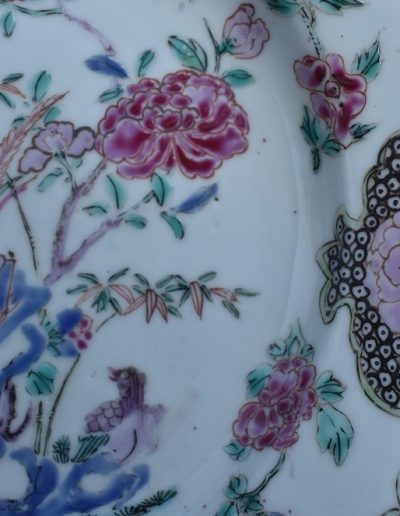

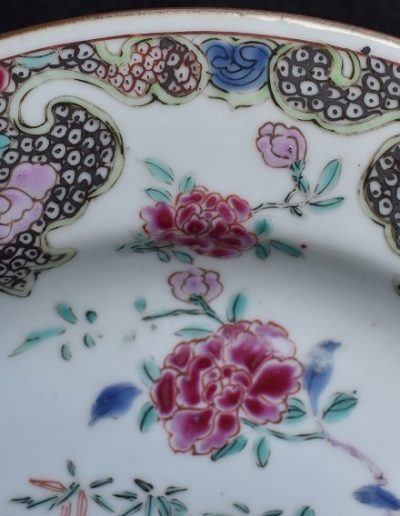

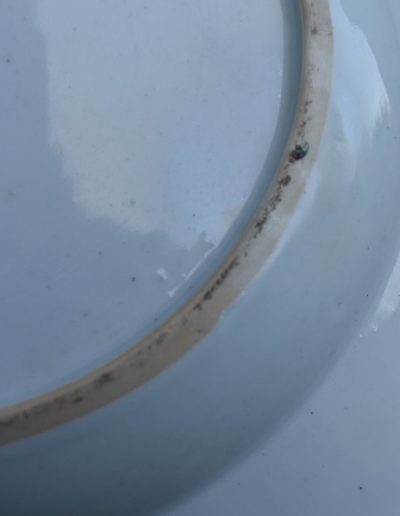
Reviews